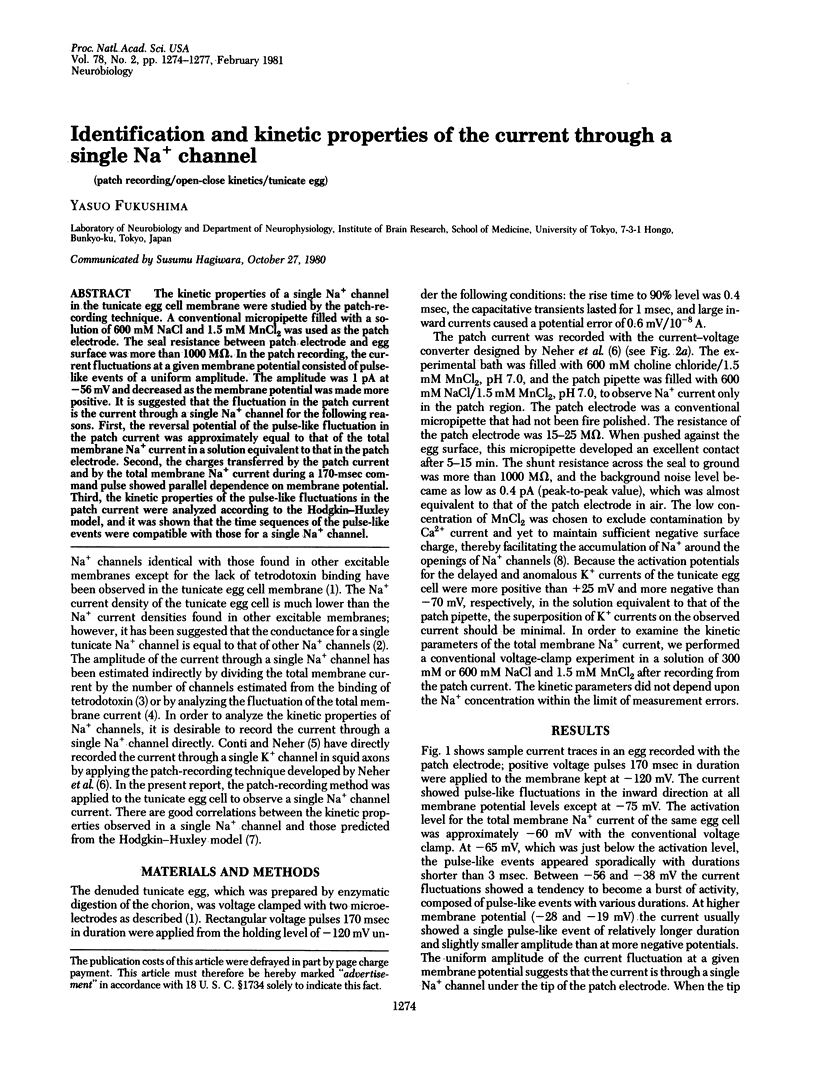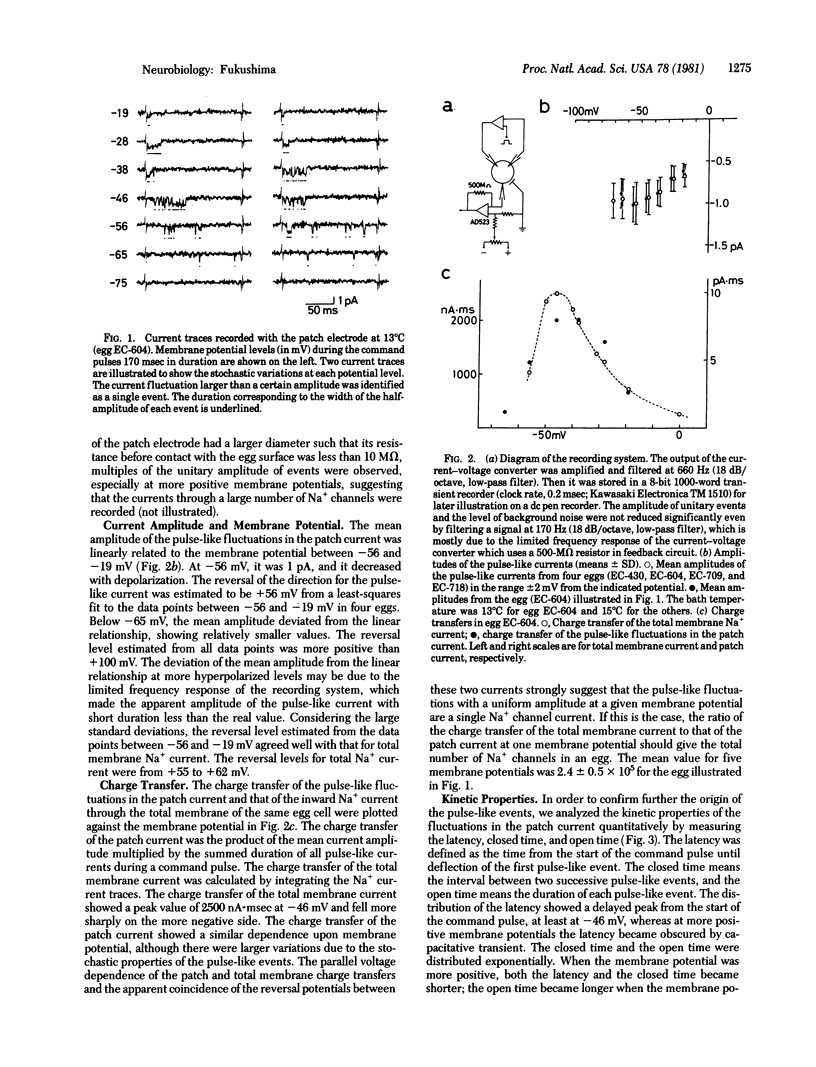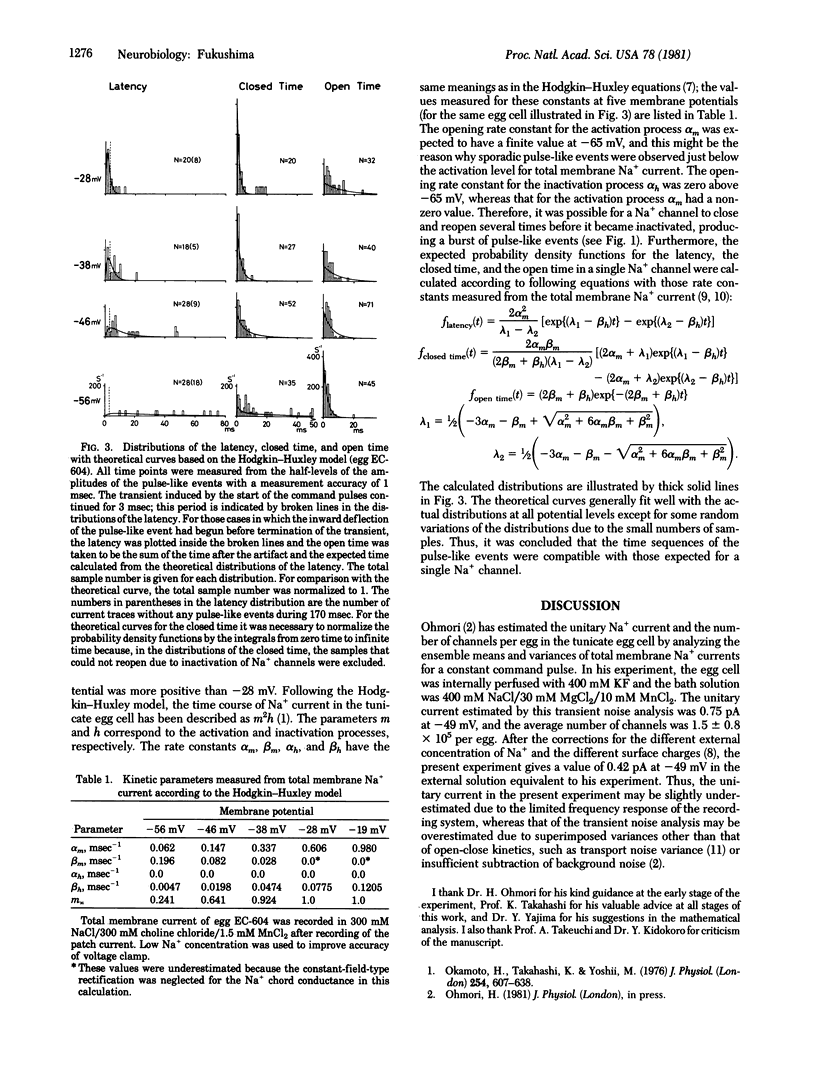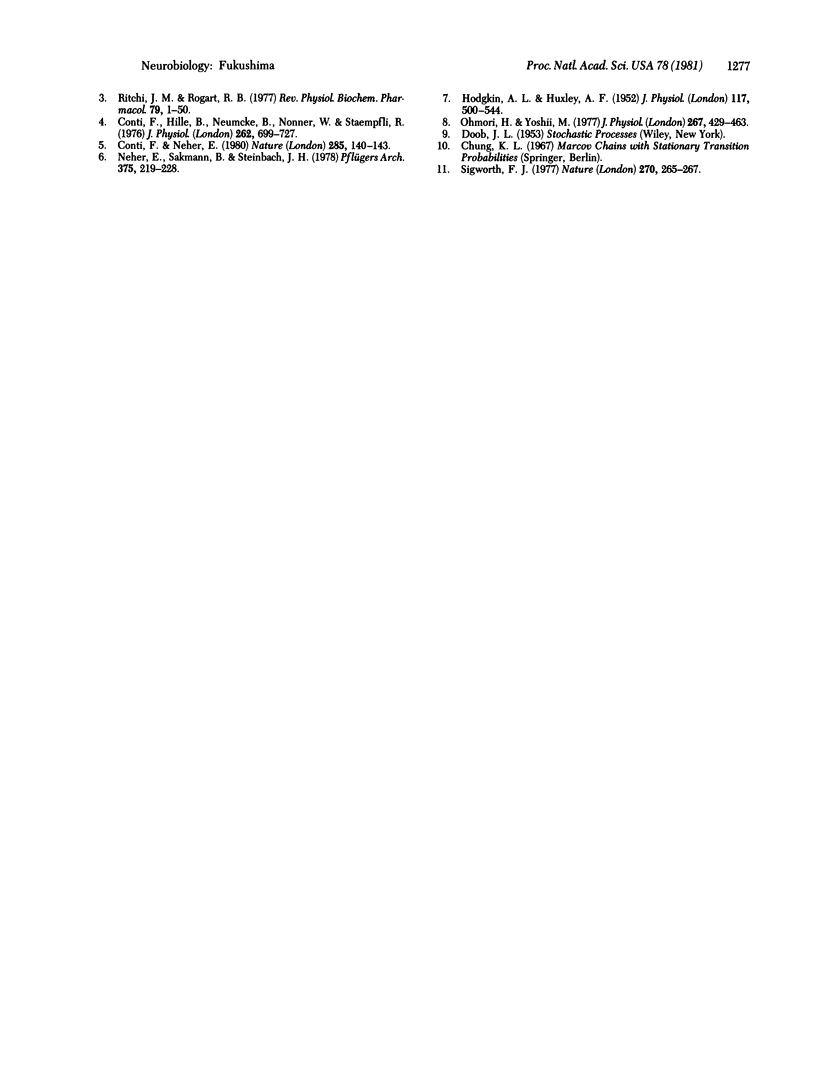Abstract
The kinetic properties of a single Na+ channel in the tunicate egg cell membrane were studied by the patch-recording technique. A conventional micropipette filled with a solution of 600 mM NaCl and 1.5 mM MnCl2 was used as the patch electrode. The seal resistance between patch electrode and egg surface was more than 1000 M omega. In the patch recording, the current fluctuations at a given membrane potential consisted of pulse-like events of a uniform amplitude. The amplitude was 1 pA at -56 mV and decreased as the membrane potential was made more positive. It is suggested that the fluctuation in the patch current is the current through a single Na+ channel for the following reasons. First, the reversal potential of the pulse-like fluctuation in the patch current was approximately equal to that of the total membrane Na+ current in a solution equivalent to that in the patch electrode. Second, the charges transferred by the patch current and by the total membrane Na+ current during a 170-msec command pulse showed parallel dependence on membrane potential. Third, the kinetic properties of the pulse-like fluctuations in the patch current were analyzed according to the Hodgkin-Huxley model, and it was shown that the time sequences of the pulse-like events were compatible with those for a single Na+ channel.
Full text
PDF



Selected References
These references are in PubMed. This may not be the complete list of references from this article.
- Conti F., Hille B., Neumcke B., Nonner W., Stämpfli R. Measurement of the conductance of the sodium channel from current fluctuations at the node of Ranvier. J Physiol. 1976 Nov;262(3):699–727. doi: 10.1113/jphysiol.1976.sp011616. [DOI] [PMC free article] [PubMed] [Google Scholar]
- Conti F., Neher E. Single channel recordings of K+ currents in squid axons. Nature. 1980 May 15;285(5761):140–143. doi: 10.1038/285140a0. [DOI] [PubMed] [Google Scholar]
- HODGKIN A. L., HUXLEY A. F. A quantitative description of membrane current and its application to conduction and excitation in nerve. J Physiol. 1952 Aug;117(4):500–544. doi: 10.1113/jphysiol.1952.sp004764. [DOI] [PMC free article] [PubMed] [Google Scholar]
- Neher E., Sakmann B., Steinbach J. H. The extracellular patch clamp: a method for resolving currents through individual open channels in biological membranes. Pflugers Arch. 1978 Jul 18;375(2):219–228. doi: 10.1007/BF00584247. [DOI] [PubMed] [Google Scholar]
- Ohmori H., Yoshii M. Surface potential reflected in both gating and permeation mechanisms of sodium and calcium channels of the tunicate egg cell membrane. J Physiol. 1977 May;267(2):429–463. doi: 10.1113/jphysiol.1977.sp011821. [DOI] [PMC free article] [PubMed] [Google Scholar]
- Okamoto H., Takahashi K., Yoshii M. Membrane currents of the tunicate egg under the voltage-clamp condition. J Physiol. 1976 Jan;254(3):607–638. doi: 10.1113/jphysiol.1976.sp011249. [DOI] [PMC free article] [PubMed] [Google Scholar]
- Ritchie J. M., Rogart R. B. The binding of saxitoxin and tetrodotoxin to excitable tissue. Rev Physiol Biochem Pharmacol. 1977;79:1–50. doi: 10.1007/BFb0037088. [DOI] [PubMed] [Google Scholar]
- Sigworth F. J. Sodium channels in nerve apparently have two conductance states. Nature. 1977 Nov 17;270(5634):265–267. doi: 10.1038/270265a0. [DOI] [PubMed] [Google Scholar]


